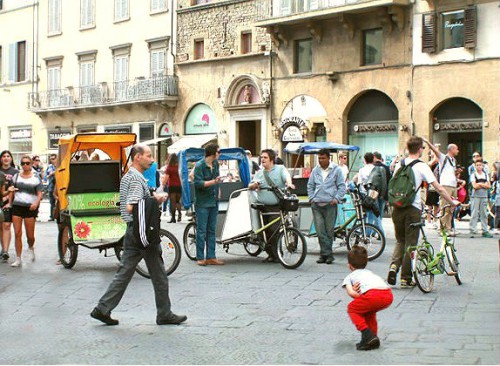The Roman Pantheon is a concrete marvel, a product of mathematical genius and very clever use of space. I was in awe of its thick walls, large marble columns and huge doors. In fact, everything about the Pantheon is huge; both inside and outside. It made me wonder how many slaves suffered and died in the construction of this magnificent structure. The Pantheon dates back to 125AD and until the 20th century, was the largest unreinforced concrete structure in the world, inducing even Michelangelo to study its dimensions before starting work on the dome at St. Peter’s Basilica in Vatican City.
Its ecclesiastical interior design contrasts with the temple’s structural design, but the marble floor, designed in a series of geometric patterns, is still the ancient Roman original.


But the most remarkable and spectacular part of the building is the dome. It was the largest dome in the world until 1436 when Brunelleschi’s Florence Cathedral was constructed.
At the top of the huge dome is a large opening, the oculus, which provides the only source of light for the entire building. An engineering marvel of the Roman world, no other oculus came close in terms of size! The height to the oculus and the diameter of the interior circle are the same, 43.3 metres (142 ft). This means that it is a perfect sphere resting in a cylinder. Light flows into the interior, illuminating different areas of the room at different times of the day, giving visitors a perspective of the magnificence of the universe. The oculus is never covered and any rain falling into the interior runs off the slightly convex floor and into discreet drainpipes built underneath.

Nobody can really tell how and why the Pantheon was built. However, considering the dimensions and extraordinary size of its dome, the Pantheon might have been intended as a giant sundial. The emperor entering ‘with the sun’ would have symbolised ‘placing Rome among the Gods’, thereby reinforcing the relationship between religion and the emperor’s divine right to rule.
The famous artist, Raphael and of two Italian kings, Vittorio Emanuele II and Umberto I are buried inside the Pantheon.
It goes without question that the Pantheon is listed under UNESCO’s World Heritage Site.














































